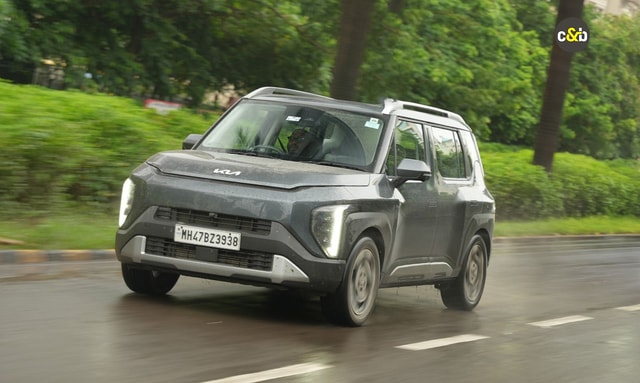Important Aspects of Tyre Rotation You Must Know

- It was only during the early 1900s when Tyres were turned black
- There are over 200 materials that are combined to make Tyres
- A new airless wheel, "tweel", is being actively developed
Maintaining parts of a car can be a complex procedure. But some parts are easy to maintain and require only a few hours of work. One such servicing procedure is Tyre rotation. Tyres are extremely important for the vehicle. Think about the inconvenience that one has to go through if they get a flat Tyre in the middle of nowhere. Tyres need maintenance to rotate perfectly and do not wear out after limited usage.

Photo Credit: pixabay.com
What is a Tyre rotation?
Tyre rotation is changing the position of each of the Tyres on the car. Typically, it is suggested by most manufacturers that the Tyres are rotated around every 7500 km.

Photo Credit: pixabay.com
Importance of Tyre rotation
- Tyres tend to wear out over time. By rotating the Tyres, the wear is evenly distributed across all four Tyres. That extends the lifetime of the Tyres.
- Rotating Tyres can be a great way of maintaining the balance of the Tyres. Since the wear is evenly distributed, the tread is well-aligned for the vehicle.
- If the vehicle is an all-wheel-drive, rotation reduces the stress on all the expensive drivetrain components.
Patterns of Tyre rotation
Several patterns are used for the process of Tyre rotation:
- X Pattern: This is a standard pattern. The front left and rear right Tyres are rotated, and so are the rear left and front right Tyres. This creates an X pattern.
- Rearward-Cross Pattern: This is typically used in 4-wheel drive vehicles. The rear Tyres go to the front as it is. The front Tyres occupy the rear position but in a cross. It can also be used in RWD vehicles.
- Forward-Cross Pattern: The front Tyres go to the rear as it is. The rear Tyres are moved to the front but in a cross position. This can be used in FWD vehicles.
- Side to side Pattern: This pattern is used for cars with varying sets of front and rear Tyres. The two front Tyres are rotated among themselves, and so are the two rear Tyres.
- Front to rear Pattern: This is pretty straightforward. The left rear Tyre is exchanged with the left front Tyre. The right rear Tyre is exchanged with the right front Tyre.

Photo Credit: pixabay.com
Incorporating rotation of the spare Tyre
There are two techniques by which the spare Tyres can also be rotated:
- 5-Tyre forward cross pattern: So, this is how it goes down – the front left and rear left Tyres are exchanged, the rear left Tyre goes to the front right, the front right gets replaced with the spare Tyre, the spare Tyre goes to the rear right and the rear right moves to the front left.
- 5-Tyre rearward pattern: The front left is exchanged with the spare, the spare goes to the rear right, the rear right goes to the front right, the front right moves to the rear left, and the rear left goes to the front left.
Regularly rotating all the Tyres of the car can certainly increase the life of the Tyres as well as improve the driving experience.
Latest News
 car&bike Team | Jan 19, 2026Skoda Kushaq Facelift Debut Tomorrow: What To ExpectFacelifted Kushaq to get updated looks and new tech inside the cabin.1 min read
car&bike Team | Jan 19, 2026Skoda Kushaq Facelift Debut Tomorrow: What To ExpectFacelifted Kushaq to get updated looks and new tech inside the cabin.1 min read Jaiveer Mehra | Jan 17, 20262026 Tata Punch Facelift Price, Variants ExplainedUpdated Punch is available in 8 trim levels with naturally aspirated petrol, CNG and turbo-petrol engine options.3 mins read
Jaiveer Mehra | Jan 17, 20262026 Tata Punch Facelift Price, Variants ExplainedUpdated Punch is available in 8 trim levels with naturally aspirated petrol, CNG and turbo-petrol engine options.3 mins read car&bike Team | Jan 17, 2026Skoda Kushaq Facelift Teased Ahead of Launch In Coming WeeksMid-lifecycle update to bring with it styling updates as well as new features inside the cabin.1 min read
car&bike Team | Jan 17, 2026Skoda Kushaq Facelift Teased Ahead of Launch In Coming WeeksMid-lifecycle update to bring with it styling updates as well as new features inside the cabin.1 min read car&bike Team | Jan 16, 2026Pierer Mobility AG Rebranded as Bajaj Mobility AG Following KTM TakeoverThis marks a major shift in ownership and strategic direction in the global motorcycle industry.1 min read
car&bike Team | Jan 16, 2026Pierer Mobility AG Rebranded as Bajaj Mobility AG Following KTM TakeoverThis marks a major shift in ownership and strategic direction in the global motorcycle industry.1 min read Seshan Vijayraghvan | Jan 16, 2026Kia Syros Variant Line-Up Expanded With HTK (EX) Trim; Prices Start At Rs. 9.89 LakhPositioned between the HTK (O) and HTK+ trims, the new variant will be offered in both petrol and diesel options.2 mins read
Seshan Vijayraghvan | Jan 16, 2026Kia Syros Variant Line-Up Expanded With HTK (EX) Trim; Prices Start At Rs. 9.89 LakhPositioned between the HTK (O) and HTK+ trims, the new variant will be offered in both petrol and diesel options.2 mins read car&bike Team | Jan 16, 2026MG Majestor India Launch On February 12Unveiled in India at the 2025 Bharat Mobility Expo, the Majestor is expected to be positioned as a more premium alternative to the Gloster.1 min read
car&bike Team | Jan 16, 2026MG Majestor India Launch On February 12Unveiled in India at the 2025 Bharat Mobility Expo, the Majestor is expected to be positioned as a more premium alternative to the Gloster.1 min read
 Amaan Ahmed | Jan 17, 2026Bajaj Chetak C25 First Ride Review: Basic, Likeable E-Scooter For First-Time RidersThe Chetak C25, in quite a few ways, is poles apart from the larger and more powerful 30 and 35 Series models, but in its mannerisms, it is very much a Chetak.8 mins read
Amaan Ahmed | Jan 17, 2026Bajaj Chetak C25 First Ride Review: Basic, Likeable E-Scooter For First-Time RidersThe Chetak C25, in quite a few ways, is poles apart from the larger and more powerful 30 and 35 Series models, but in its mannerisms, it is very much a Chetak.8 mins read Bilal Firfiray | Jan 9, 2026Toyota Urban Cruiser Hyryder: 10,000 km Long-Term ReviewAfter spending over three months and 10,000 km with the Toyota Urban Cruiser Hyryder Hybrid, we were impressed by its real-world mileage, seamless hybrid, practical comfort, and Toyota reliability. Is it the best C-SUV then?5 mins read
Bilal Firfiray | Jan 9, 2026Toyota Urban Cruiser Hyryder: 10,000 km Long-Term ReviewAfter spending over three months and 10,000 km with the Toyota Urban Cruiser Hyryder Hybrid, we were impressed by its real-world mileage, seamless hybrid, practical comfort, and Toyota reliability. Is it the best C-SUV then?5 mins read Seshan Vijayraghvan | Jan 8, 20262026 Mahindra XUV 7XO Review: Big On Tech, Bigger On ComfortThe new Mahindra XUV 7XO is flashier, feature packed, and comes with more advanced tech. But are the changes just incremental or actually substantial?1 min read
Seshan Vijayraghvan | Jan 8, 20262026 Mahindra XUV 7XO Review: Big On Tech, Bigger On ComfortThe new Mahindra XUV 7XO is flashier, feature packed, and comes with more advanced tech. But are the changes just incremental or actually substantial?1 min read Preetam Bora | Jan 10, 2026Simple One Gen 2 First Ride Review: 265 km Claimed Range!The Gen 2 model of Simple Energy’s first electric scooter gets a fair few updates, including new features, tech, more range and lighter weight. We spent a couple of hours with the Simple One Gen 2 to find out if it manages to impress.6 mins read
Preetam Bora | Jan 10, 2026Simple One Gen 2 First Ride Review: 265 km Claimed Range!The Gen 2 model of Simple Energy’s first electric scooter gets a fair few updates, including new features, tech, more range and lighter weight. We spent a couple of hours with the Simple One Gen 2 to find out if it manages to impress.6 mins read Amaan Ahmed | Jan 3, 2026VLF Mobster 135 300 KM Review: Fun But FlawedA 125 cc scooter with Italian design and Chinese genes is a rare combination, and while some may be tempted to dismiss it because of its origins, the VLF Mobster shows 125s can also be exciting – but not without compromises.11 mins read
Amaan Ahmed | Jan 3, 2026VLF Mobster 135 300 KM Review: Fun But FlawedA 125 cc scooter with Italian design and Chinese genes is a rare combination, and while some may be tempted to dismiss it because of its origins, the VLF Mobster shows 125s can also be exciting – but not without compromises.11 mins read






















































































































